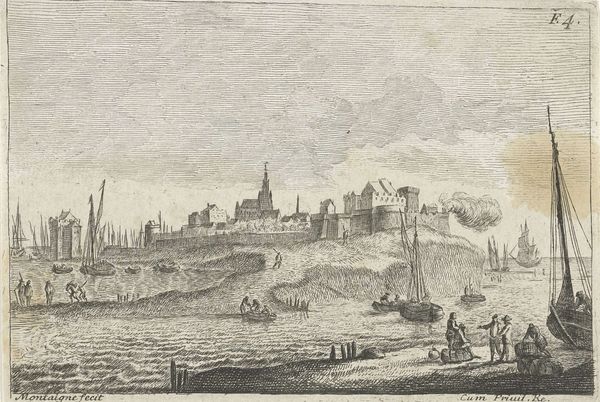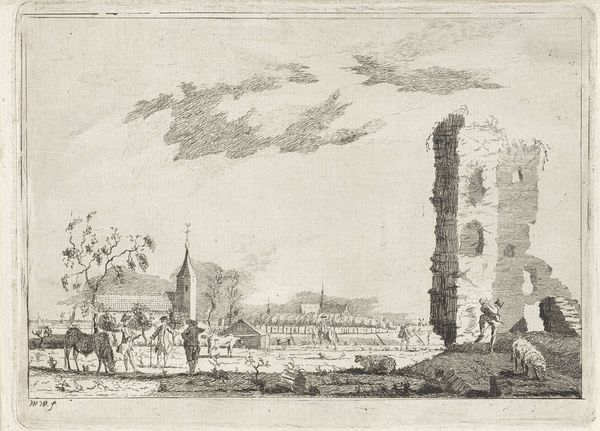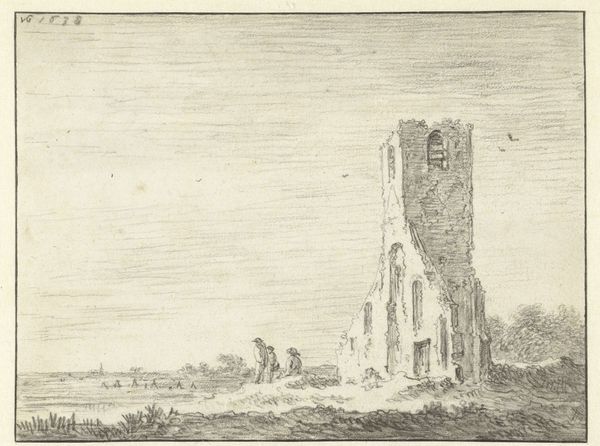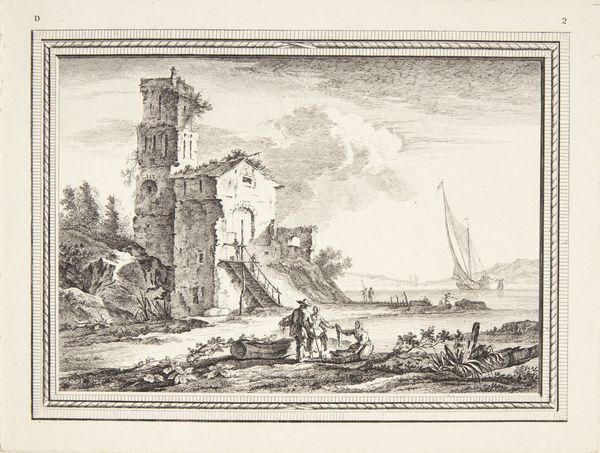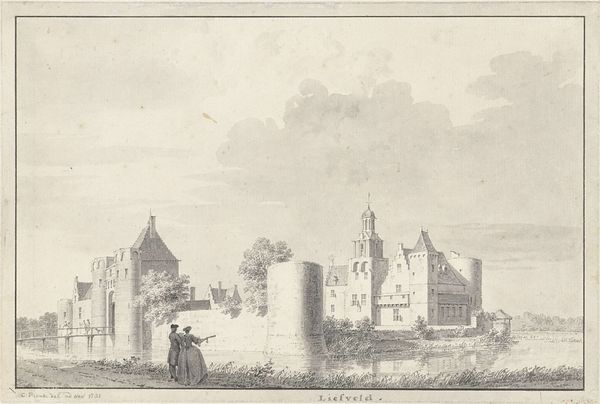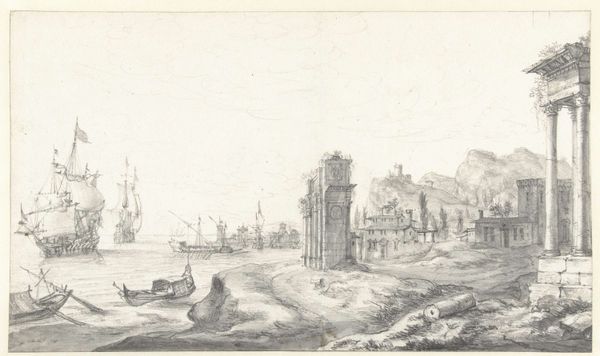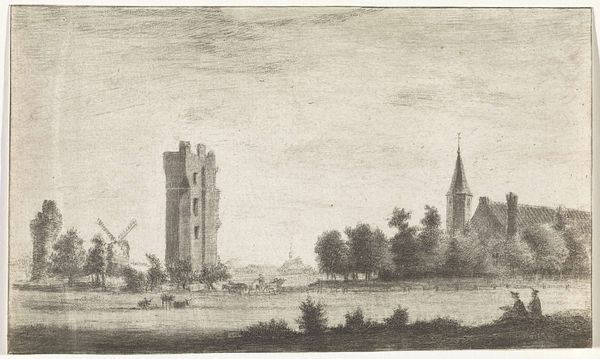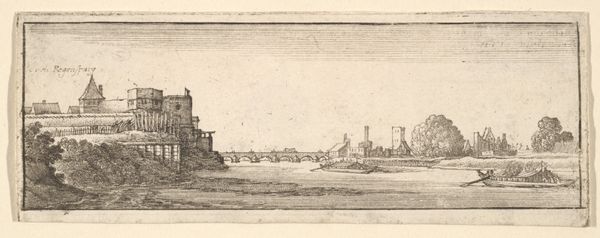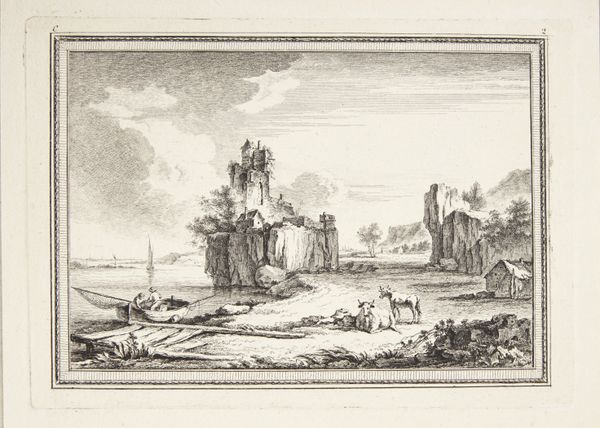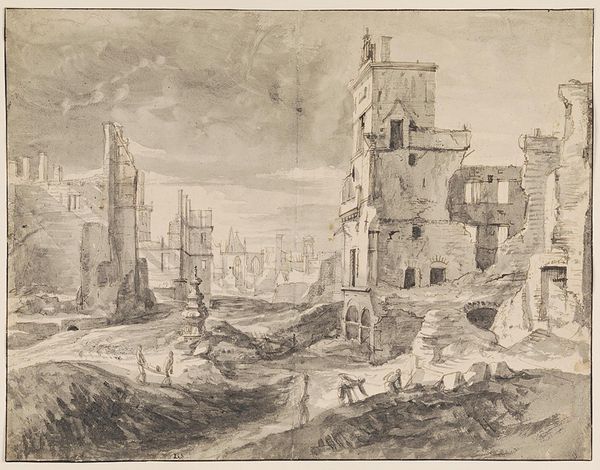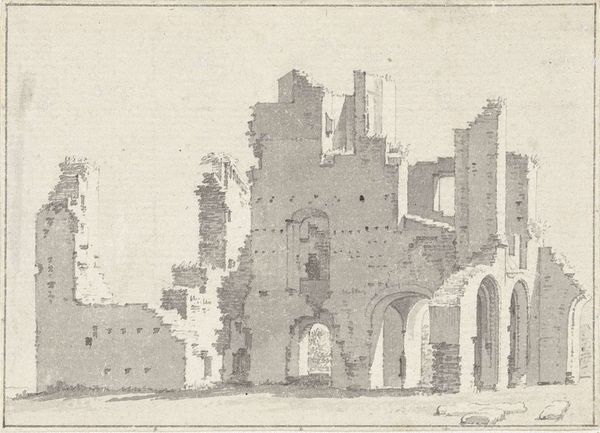
Dimensions: height 184 mm, width 310 mm
Copyright: Rijks Museum: Open Domain
Curator: We're looking at a pen and ink drawing titled "Ruïne van de abdij van Rijnsburg," which translates to "Ruin of the Abbey of Rijnsburg." It's attributed to Hendrik de Winter, and its creation date falls somewhere between 1727 and 1790. Editor: The skeletal remains of that abbey dominate the composition! It’s all rather melancholy, softened by the figures strolling casually nearby. The stark contrast with the neighboring church makes for a complicated sentiment though, doesn't it? Curator: Indeed. Notice how de Winter uses line weight and density to create spatial depth. The ruin's fragmented structure, rendered with meticulous detail, leads our eye toward the solid geometry of the intact church. The paper itself seems to echo this history through its color. Editor: The ruin itself! It becomes a potent symbol, doesn’t it? Once a site of spiritual and perhaps political authority, reduced to fragments. Juxtaposed against the enduring presence of the church, it’s a conversation about power, permanence, and the relentless passage of time. The way de Winter captured those clouds adds a layer too... they seem to reflect that passage. Curator: Quite. Structurally, that sharp contrast reinforces a binary between the temporal and the eternal. The light etches out every fractured stone of the ruin with incredible precision. Even the application of ink has been brilliantly calibrated to create an accurate play of light. Editor: I agree, though to me the clouds introduce a sort of wild card, almost as if history is unfinished. Despite the careful linework, there is an untamed sense of space created by those wisps in the sky that invite the viewers own dreams, regrets, and associations. De Winter creates a haunting narrative out of simple marks on paper. Curator: It’s interesting that he places figures within the drawing at a casual distance. He’s acknowledging his role as both observer and recorder, giving this picture a certain honesty. Editor: Exactly. The artwork then embodies not only a visual documentation of architecture, but becomes a space of remembrance. De Winter invites us to reflect on a site and consider our transient position when confronted by history itself. A very Romantic idea, really. Curator: A testament to the enduring power of form and symbolism in historical documentation, I would argue! Editor: I agree; and through that, we gain an incredible glimpse into the enduring symbols of shifting times.
Comments
No comments
Be the first to comment and join the conversation on the ultimate creative platform.
